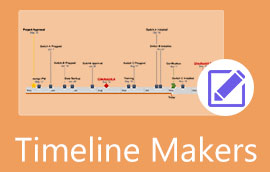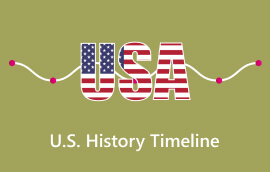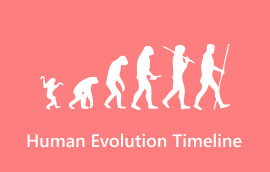Unveiling European History with the Middle Ages Timeline
Have you heard the terms Middle Ages, Medieval Times, and Dark Ages? These three terms refer to the same period of time. In fact, it is the most important era for Western Europe. Some history lovers and enthusiasts wanted to learn more about this period. If you come here for that purpose, keep reading this review. Here, we will show you the timeline of the Middle Ages, provide an overview, and introduce its three periods. Another thing is you’ll get to know how you can creatively present its timeline using a top-notch diagram maker.

- Part 1. An Overview of the Middle Ages
- Part 2. Middle Ages Timeline
- Part 3. 3 Periods of Middle Ages
- part 4. FAQs About Middle Ages Timeline
Part 1. An Overview of the Middle Ages
The Middle Ages, or the Medieval Times in Europe, is a period between the fall of the Roman Empire. During the 400s to 1400 A.D., Europe transformed from ancient to modern times in the Middle Ages history. People think that after the Roman Empire collapsed, it emerged from culture, and society declined. Due to that belief, the Middle Ages is also called the Dark Ages.
During the Middle Ages, hundreds of vassals with the titles prince, count, and duke became the rulers of their lands. It is known as feudalism, for they rule like a king. Also, the Catholic Church displayed immense power, influencing religious and civil affairs. Medieval Times also saw many architectural achievements. But they also experienced threats like invasions, plagues, and more. To learn more about what happened, move on to the next part.
Part 2. Middle Ages Timeline
The Middle Ages started from the 5th to the late 15th centuries. Here’s a noteworthy explanation of what happened to the Middle Ages timeline from 450 to 1450 A.D.
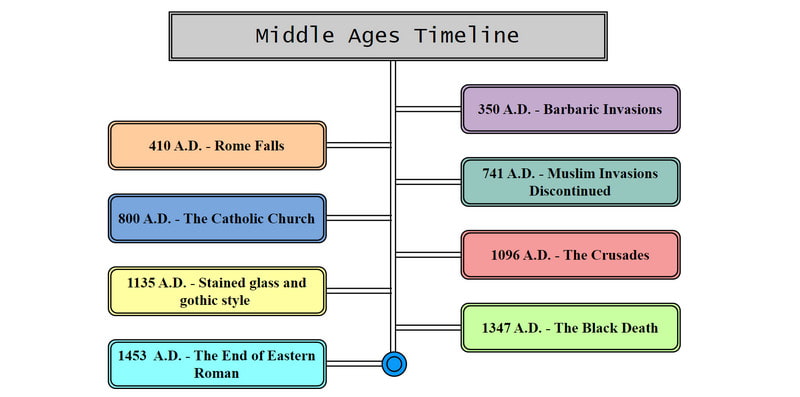
Get a detailed Middle Ages timeline.
Bonus Tip: How to Create a Timeline with MindOnMap
Now that you learn the Middle Ages timeline of events, display it in a visual presentation. How do you do it? It is through the help of a leading timeline diagram maker, MindOnMap. It is online and free software that lets users make their desired templates. You can choose from the options: treemap, org chart, fishbone diagram, flow chart, and more. Another thing is that you can add pictures, links, and text. Selecting a theme and style is also possible so that you can produce a creative timeline. MindOnMap also auto-saves your work after a few seconds of not using the app. In this way, there will be no data loss. Whatever type of timeline you want to work, MindOnMap can surely help you. If you want to know how it works, follow the steps below and make your timeline.
To begin with, go to the official website of MindOnMap. There, you will see two options, the Free Download and Create Online buttons. Select your preferred version, and create a MindOnMap account.
Secure Download
Secure Download
Once done, select Flowchart from the layout options you see in the interface. In this guide, we used a flow chart since it will give you more freedom to create the timeline you desire.

In the next interface, you may now customize your timeline. Begin by choosing the shapes you want on the left part of your screen. You can also select a Theme and Style on the right side.
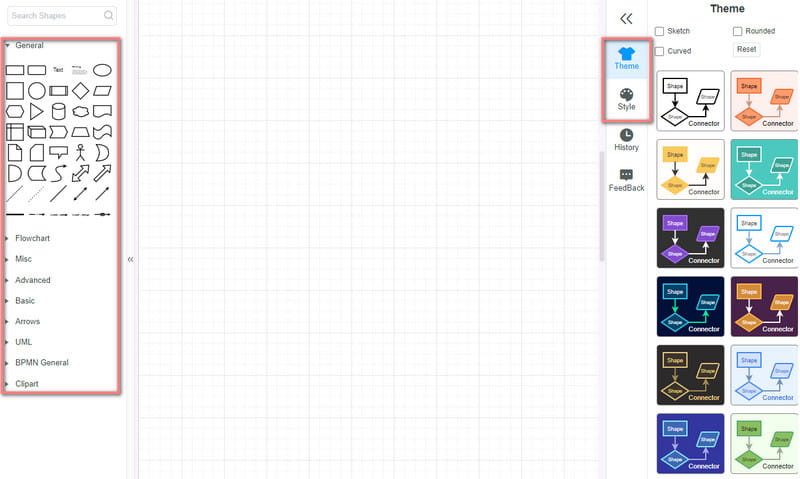
Optionally, you can work with friends and others using the tool’s collaboration feature. To do it, click the Share button at the right corner of the tool’s interface. Then, set a Valid Date and Password to secure your work.
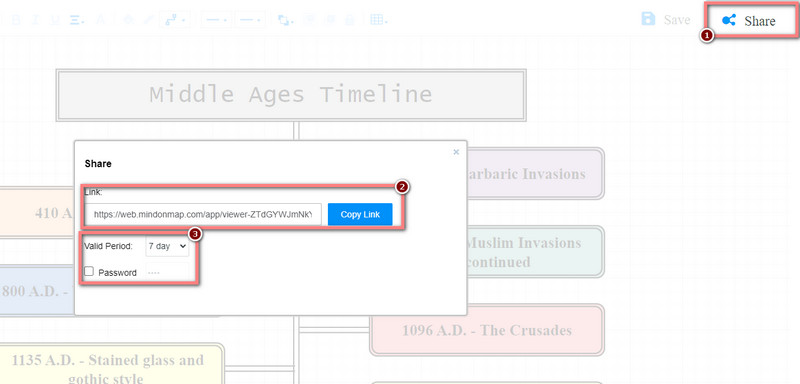
When your timeline is ready, start exporting it. Start by clicking the Export button. Then, choose your desired file format. Wait for a few seconds, and there you have it!
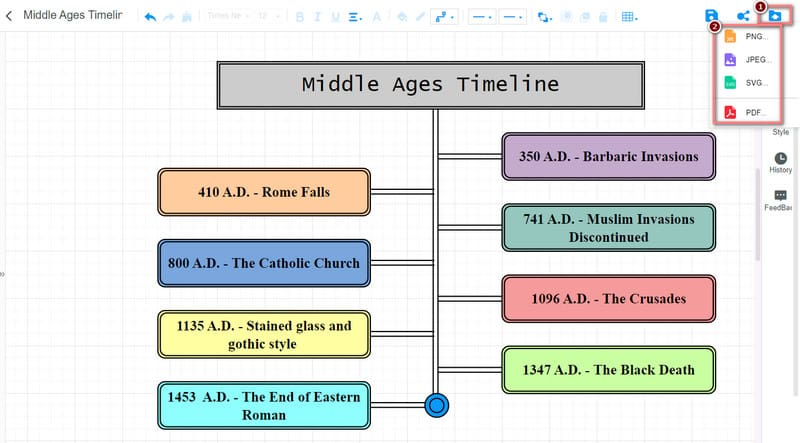
Part 3. The 3 Periods of the Middle Ages
The timeline for the Middle Ages is divided into three periods: the Early, High, and Late Middle Ages. Here’s an explanation of each period.
1. Early Middle Ages (5th-10th Century)
Before, to find better places to live, Barbaric tribes went into Roman lands to steal. Then, the Early Medieval Era began with the fall of Rome. When the Roman Empire fell, it was divided into two sections. Yet, it is still ruled by Rome. In 467, the last Roman Emperor was thrown out of Rome. Afterward, some of the barbarians from the north started to conquer lands from the south. During this time, Christianity spread across Europe. Also, the Catholic church became the most powerful institution. There was also a rise in feudalism and the formation of different medieval empires and kingdoms. The Early Middle Ages are also referred to as Late Antiquity.
2. High Middle Ages (11th-13th Century)
In this era, the Middle Ages exemplify the best. There’s a significant growth in culture, economy, and politics. The High Middle Ages was known for the Crusades and the construction of churches in the Gothic style. During the Crusades, there were a series of religious wars between Muslims and Christians. Sadly, many people died on both sides because of the wars. The first church that used the Gothic Style was the St. Denis Abbey in Paris. At the same time, the windows were made of stained glass.
3. Late Middle Ages
The late Middle Ages is the transformation from the medieval world to the early modern one. Various challenges were also faced during this era. It includes the Black Death, the Hundred Years' War, famine, and population decline. The Black Death was a mysterious disease (bubonic plague) that killed millions of people. It is 30% of the continent’s population. When the Ottoman Empire captured Constantinople city, it signaled the end of the Eastern Roman Empire. It is also known as the Byzantium. Finally, the late Middle Ages era also witnessed the early stages of the Renaissance.
Further Reading
Part 4. FAQs About Middle Ages Timeline
What are 5 major events that happened in the Middle Ages?
The 5 major events that happened in the Middle Ages. These are the Fall of Rome, First Crusade, Black Death, the Hundred Years’ War, and the Islamic Golden Age.
When did the Middle Ages start and end?
The Middle Ages period of European history started from about 500 and ended in 1400-1500 CE.
What are the 4 reasons that ended the Middle Ages?
The 4 reasons that ended the Middle Ages are famine, the Black Death, 100 Years War, and the Fall of Constantinople.
Conclusion
All things considered, you now know the events of the Middle Ages timeline. Similarly, you learned about the different periods that took place in European history. In addition, using the best diagram maker, you can make the timeline you desire. And that ultimate and dependable tool is MindOnMap. It offers a straightforward interface that will fit every user’s tastes. So, to experience it fully, try it now.








